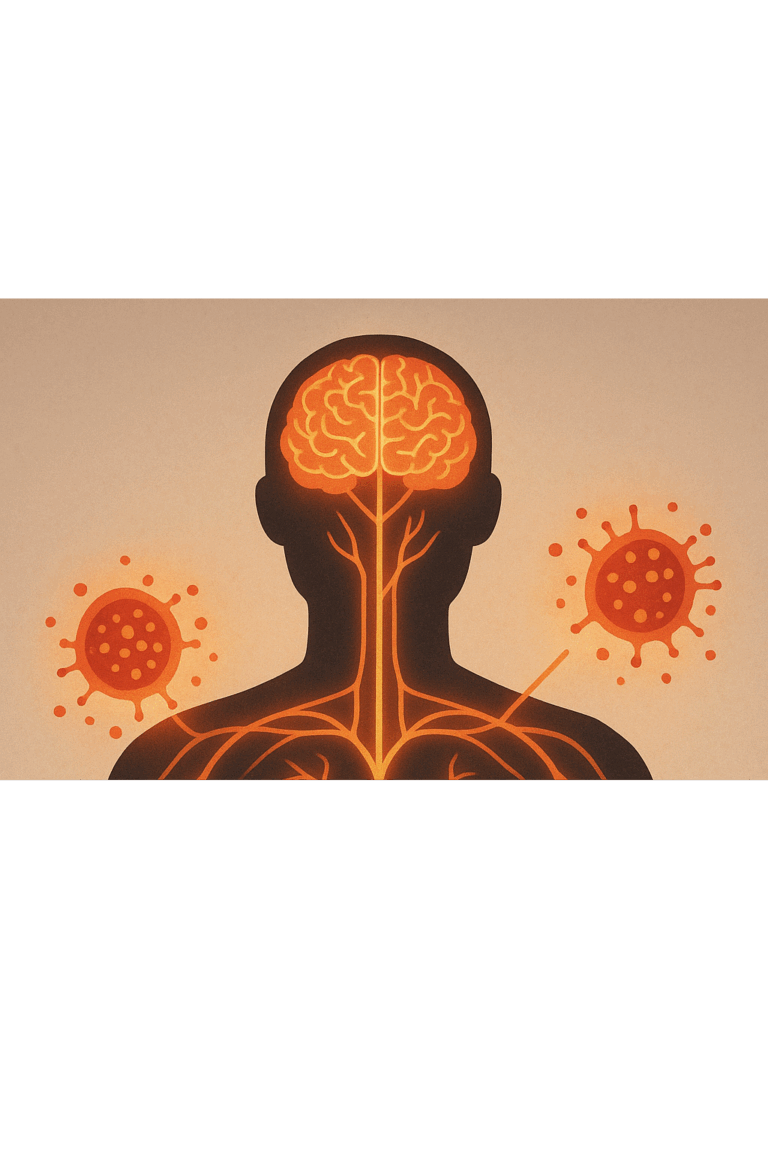- POTS and Exercise: The First Step Everyone Misses - 27 June 2025
- The Missing Link Between Breathlessness, Fatigue, and Chronic Pain: Understanding CO₂ Tolerance - 19 June 2025
- What is Mast Cell Activation Syndrome? - 12 May 2025
If you would prefer to listen to this article about Low-Dose Naltrexone, please click below.
For those with Fibromyalgia, it’s not uncommon to use medications off-label. This essentially means that the medicine is being used in a way that is different from that described in the licence, and one such drug is Naltrexone, or, to be more specific, taking it at a much lower dosage than normal. Finding effective treatment options has always been an issue for those with Fibro, one often filled with trial and error. However, there has been a lot of talk on the block lately about LDN. So, today’s article is all about what it is, what it does, and what the evidence says about it.
This article covers:
ToggleWhat is Naltrexone?
Naltrexone was initially used to treat those with alcohol and opioid dependence; however, over the last ten years or so, it’s been explored for its potential benefits in managing fibromyalgia symptoms. However, in doses significantly lower than those used for addiction treatment, LDN has actually shown some promise in treating a variety of conditions, including both chronic pain and autoimmune diseases. Typically, though, LDN is generally administered in doses ranging from 1.5 mg to 4.5 mg per day, compared to the standard 50 mg dose for addiction.
What does it do, and what does it help?
Unsurprisingly, the exact mechanism by which LDN helps with fibro symptoms is not fully understood. This is largely down to the fact that Fibromyalgia is not understood. However, researchers believe that LDN potentially works through several different pathways:
- Modulating Immune Response: LDN may reduce inflammation by modulating the activity of microglial cells in the central nervous system. These cells play a crucial role in neuroinflammation, which is thought to contribute to fibromyalgia pain.
- Increasing Endorphin Production: LDN temporarily blocks opioid receptors, leading the body to increase the production of endorphins once the blockade wears off. Endorphins are natural painkillers that can help reduce pain and improve mood.
- Balancing the Immune System: LDN is believed to help balance the immune system, which may benefit conditions like fibromyalgia involving immune dysregulation.
So, we know how it’s likely working, but what does it help with?
Well, research in this area is lacking, as you will find out later. But, initially, research and anecdotal evidence suggest several potential benefits of using Naltrexone at a lower dose:
Pain Reduction
One of the primary reasons fibromyalgia patients turn to LDN is for pain relief. Several studies have demonstrated that LDN can significantly reduce the widespread pain associated with fibromyalgia.
- Clinical trials have demonstrated significant reductions in pain and other fibromyalgia symptoms when using LDN(1). For instance, a study found a significant decrease in daily pain, highest pain levels, fatigue, and stress among participants taking 4.5 mg of LDN daily compared to a placebo group.
Improved Sleep
Sleep disturbances are a common issue in fibromyalgia, and the relationship between sleep disturbances and pain has been widely studied (2). Most of the research shows us that an increase in sleep disturbances comes with a sharp increase in pain (Which is why amitriptyline is often prescribed for fibromyalgia and sleep.)
- Sleep Quality Improvement: It’s not only well established that poor sleep directly causes more pain, but also a swift decline in physical functioning and mood, especially during the early parts of the next day often exacerbating other symptoms such as pain and fatigue(3). Anecdotal reports and smaller studies have indicated that LDN patients experience better sleep quality (4). Improved sleep can contribute to reduced pain levels and better daytime functioning. By helping patients achieve more restful and restorative sleep, LDN indirectly aids in managing fibromyalgia symptoms more effectively.
Enhanced Quality of Life
Beyond reducing pain and improving sleep, LDN has been reported to enhance the overall quality of life for fibromyalgia patients. This includes improvements in mood, energy levels, and daily functioning.
- Mood and Life Satisfaction: In a study evaluating the effects of LDN on fibromyalgia patients, participants noted significant improvements in mood and life satisfaction (5).
- Inflammatory Marker Reduction: Another study observed a significant decrease in inflammatory cytokine levels, correlating with subjective improvements in pain, mood, and satisfaction. This suggests that LDN’s anti-inflammatory effects may enhance patients’ quality of life .
What does the research say about a low dose?
So, it’s looking good from a proposed benefits point of view, and actually, when it comes to side effects and dangers, LDN is pretty safe, much more than a lot of other drugs given to those with fibro. While traditional medications like opioids or certain antidepressants often come with a slew of side effects such as drowsiness, dependency, and significant gastrointestinal issues, LDN, used in low doses, typically presents only mild side effects like occasional nausea or vivid dreams. Additionally, it doesn’t carry the risk of addiction, making it a much more appealing option for long-term management. Plus, its impact on liver health is negligible compared to other high-dose treatments, making it a much more safer choice for continuous use than some other fibro drugs.
The research into Low Dose Naltrexone (LDN) as a treatment is still in its early stages, and while the initial findings are promising, the research landscape is fraught with challenges. The primary issue lies in the limited number of large-scale, rigorous clinical trials. Although informative, most studies have been small pilot trials or case studies, which do not provide the robust data necessary for broad clinical recommendations.
A systematic review conducted by the Mayo Clinic highlighted the general safety and efficacy of LDN for fibromyalgia. It noted that while side effects are typically mild (e.g., insomnia, vivid dreams), larger, more comprehensive studies are needed to fully understand its benefits and risks. However, it’s important to note that this review excluded participants with chronic fatigue syndrome (CFS). This condition frequently co-occurs with fibromyalgia, potentially limiting the applicability of the findings to the broader fibromyalgia population.
One significant pilot study published in Pain Medicine found that LDN reduced fibromyalgia symptoms by over 30% compared to placebo, indicating a substantial effect on pain and other symptoms like fatigue and stress. Despite these encouraging results, the study’s single-blind, crossover design and small sample size limit the generalizability of the findings (6). The authors themselves call for larger, double-blind, placebo-controlled trials to confirm these initial results and to understand better the underlying mechanisms of LDN’s effects on fibromyalgia symptoms.
Another notable trial conducted in Denmark is currently underway, aiming to evaluate the efficacy of LDN in a more structured and larger sample size (7). This double-blind, randomized, placebo-controlled trial includes 100 women with fibromyalgia, assessing a range of outcomes from pain intensity to quality of life over a 12-week period. The structured approach of this study promises to add much-needed depth to our understanding of LDN’s potential as a treatment option.
In summary, while early studies suggest that LDN could be a safe and effective treatment for fibromyalgia, the current research is limited by small sample sizes, exclusion criteria, and methodological constraints. Larger, well-designed trials are essential to validate these findings and to establish LDN as a reliable treatment option for fibromyalgia sufferers.
-Adam-
FAQ on Low dose Naltrexone
When taking Low Dose Naltrexone (LDN), it is important to avoid opioid medications and alcohol. Opioids can block the effectiveness of LDN, and using them together can cause withdrawal symptoms. Additionally, consult with your healthcare provider about any other medications or supplements you are taking to avoid potential interactions.
Long-term use of Low Dose Naltrexone (LDN) is considered to be safe, with minimal side effects. Unlike higher doses used for addiction treatment, LDN does not pose significant risks for liver damage or dependency. Some individuals may experience persistent mild side effects like vivid dreams or insomnia, but these are generally manageable. Always discuss long-term use with your healthcare provider to ensure it is safe for your specific health condition.
Common side effects of Low Dose Naltrexone (LDN) include mild symptoms such as insomnia, vivid dreams, headaches, and nausea. These side effects are generally mild and often diminish over time.
It reduces inflammation by modulating microglial cell activity in the central nervous system.
Cold intolerance in fibromyalgia is due to autonomic nervous system dysfunction, leading to poor circulation, muscle stiffness, and increased pain sensitivity. Brain imaging shows altered thermal processing, making cold exposure more painful than usual.
Heat intolerance In Fibromyalgia can occur due to autonomic dysfunction, impaired sweating, and reduced brown adipose tissue activity, making it harder to regulate body temperature. Symptoms include dizziness, swelling, excessive sweating, and worsened pain.
Low-dose naltrexone (LDN) helps alleviate fibromyalgia symptoms by reducing inflammation and modulating the immune response, particularly through its effects on microglial cells in the central nervous system. It also boosts the body’s natural painkillers, such as endorphins, which can improve mood and reduce pain. Additionally, LDN has been reported to enhance sleep quality, reduce fatigue, and improve overall quality of life for many patients
LDN blocks opioid receptors temporarily, prompting the body to produce more endorphins, which can reduce pain and improve mood.
LDN helps balance the immune system, which is beneficial for conditions like fibromyalgia that involve immune dysregulation.
Enjoyed Our Blog? Why Stop Here?
If you’ve found value in our posts, imagine the impact of a structured, science-backed course tailored specifically for fibromyalgia and its unique challenges. The Full Body Fibro Course is your ultimate starting point for understanding your body, improving mobility, and managing symptoms effectively.

References:
- Australian Journal of General Practice. (2023). Low dose naltrexone in the treatment of fibromyalgia. [online] Available at: https://www1.racgp.org.au/ajgp/2023/april/low-dose-naltrexone-in-the-treatment-of-fibromyalg.
- Andersen, M.L., Araujo, P., Frange, C. and Tufik, S. (2018). Sleep Disturbance and Pain. Chest, 154(5), pp.1249–1259. doi:https://doi.org/10.1016/j.chest.2018.07.019.
- Gerhart, J.I., Burns, J.W., Post, K.M., Smith, D.A., Porter, L.S., Burgess, H.J., Schuster, E., Buvanendran, A., Fras, A.M. and Keefe, F.J. (2016). Relationships Between Sleep Quality and Pain-Related Factors for People with Chronic Low Back Pain: Tests of Reciprocal and Time of Day Effects. Annals of Behavioral Medicine, [online] 51(3), pp.365–375. doi:https://doi.org/10.1007/s12160-016-9860-2.
- Younger, J. and Mackey, S. (2009). Fibromyalgia Symptoms Are Reduced by Low-Dose Naltrexone: A Pilot Study. Pain Medicine, 10(4), pp.663–672. doi:https://doi.org/10.1111/j.1526-4637.2009.00613.x.
- Clinicaltrials.gov. (2025). Available at: https://clinicaltrials.gov/study/NCT04270877
- Driver, C.N. and D’Souza, R.S. (2023). Efficacy of Low-Dose Naltrexone and Predictors of Treatment Success or Discontinuation in Fibromyalgia and Other Chronic Pain Conditions: A Fourteen-Year, Enterprise-Wide Retrospective Analysis. Biomedicines, 11(4), p.1087. doi:https://doi.org/10.3390/biomedicines11041087.
- Bruun, K.D., Amris, K., Vaegter, H.B., Blichfeldt-Eckhardt, M.R., Holsgaard-Larsen, A., Christensen, R. and Toft, P. (2021). Low-dose naltrexone for the treatment of fibromyalgia: protocol for a double-blind, randomized, placebo-controlled trial. Trials, 22(1). doi:https://doi.org/10.1186/s13063-021-05776-7.





